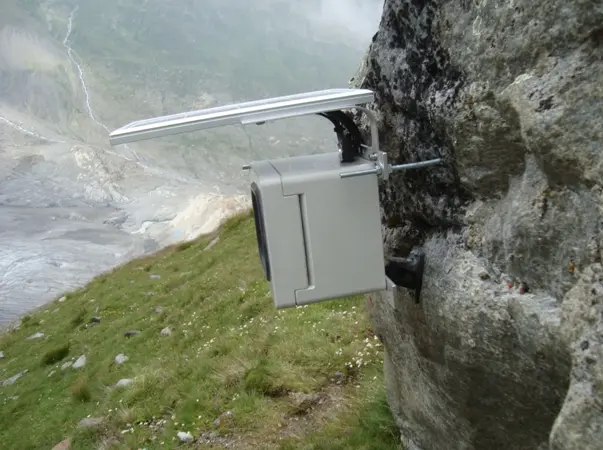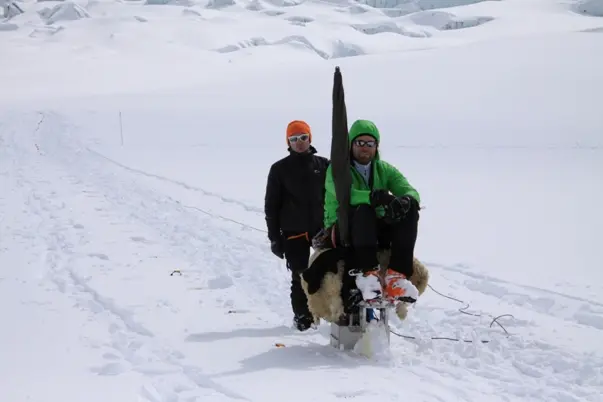SP4: Mass turnover and movements of glacier tongues and subglacial sediments in the current state and under conditions of continuing glacier melt
In sub-project 4, glacial changes within the investigation area are looked into. The main focus is on the tongue of the largest glacier, the Gepatschferner. Using the direct glacial method, the ice melt on the glacier surface is measured. In doing so, 16 ablation levels which were drilled into the glacier tongue at the beginning of the ablation period are measured on a regular basis and their values interpolated to arrive at the surface mass balance.
The total mass balance is calculated with the geodetic method on the basis of digital elevation model. The flow velocity on the surface is recorded with 2 automatic cameras and measured using “Feature Tracking” and by DGPS measurements of the ablation levels. Additionally, the new method of vibroseismics is applied for an examination of the disintegration and temporal change of the interface (glacier - bedrock). The ice thickness is also measured with geo radar, which allows a comparison of both methods. On the basis of these measurements, the dynamics of the tongue and the sediment production of the glacier as important sources for the fluvial sediment transport (see SP3) are calculated.
Subsequently, discharge is modelled using climate and discharge data and future scenarios are calculated that show how the glacier and, as a consequence, the sediment production and discharge changes based on climate changes as described in the IPCC reports.

